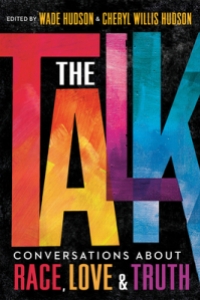Cindy:  Have we got a new series for you to put on standing order! Escape at 10,000 Feet (Balzer+Bray/HarperAlley, March 2020) by Tom Sullivan is the first book in the new Unsolved Case Files series based on real FBI cases. This graphics-intensive nonfiction title features the D.B. Cooper case, the only unsolved U.S. airplane highjacking case. On Nov. 24, 1971 a man in his 40s wearing a business suit and carrying a briefcase entered the Portland International Airport and bought a $20 one-way ticket to Seattle. Once seated in the back of the plane he lit a cigarette and handed a note to a flight attendant. The note?
Have we got a new series for you to put on standing order! Escape at 10,000 Feet (Balzer+Bray/HarperAlley, March 2020) by Tom Sullivan is the first book in the new Unsolved Case Files series based on real FBI cases. This graphics-intensive nonfiction title features the D.B. Cooper case, the only unsolved U.S. airplane highjacking case. On Nov. 24, 1971 a man in his 40s wearing a business suit and carrying a briefcase entered the Portland International Airport and bought a $20 one-way ticket to Seattle. Once seated in the back of the plane he lit a cigarette and handed a note to a flight attendant. The note?
Miss, I have a bomb here and I would like you to sit next to me.
From there, readers not familiar with the case learn about D.B. Cooper’s demands, the heist of $200,000, and the decades-long search for Cooper and the money. Young readers will be riveted with the details, including the astounding discovery of $5800 of the marked bills by an 8-year-old boy in 1980. Did Cooper survive the jump? If so where is he, and where is the rest of the money? A year or so ago a sixth-grade boy asked me if I had any books about D.B. Cooper. I wish I’d had this book then. The next in the series is Jailbreak at Alcatraz (Sept. 2021). I can’t wait!
Lynn: I know that there is crime and possible death at the heart of this unsolved crime but honestly, what a total hoot this book is!! Today’s kids are far too young to remember the show Dragnet but Tom Sullivan writes with a terrific deadpan Dragnet’s “Joe Friday” voice that is perfect for the topic. OK—most of you faithful readers are probably way too young to remember Dragnet too. So just take my word for it, this is Joe Friday with a sly sense of humor. Since this unsolved crime took place in 1971 when a LOT of things were different, Sullivan had to provide some background information for kids. The hijacker, for example, simply carried his briefcase/bomb on board with him, so one sidebar explains that, yes, in 1971 you just walked on a plane without ever having your baggage security checked. After settling into his seat, the hijacker ordered a drink, lit a cigarette, and handed a note to the stewardess. Here the sidebar assures readers that in 1970 people could smoke anywhere as astonishing as that sounds today. Sidebars also add a wild assortment of related ephemera that is irresistible, such as a diagram of the critically important rear staircase or what all the markings are on a $20 bill or a map of where the 3 bundles of marked bills were found nine years later by some campers.
I love the illustrations in this graphic novel too. Not to mix my references but the style reminds me of another icon of my childhood, the comic Dick Tracy, the crime-fighting hero with a geometric square jaw and unsmiling visage. The drawings are a perfect match to the just-the-facts, ma’am text. I read this in galley so I haven’t yet seen the promised photos from the FBI Files on the case that are to be included in the finished copy but I’m eager to.
Elementary and middle school librarians—you are going to need a zillion copies of this book to meet demand once the kids see it!




 Cindy: Can we talk? A few years ago when one of my white 8th-grade students read
Cindy: Can we talk? A few years ago when one of my white 8th-grade students read  Lynn: Books for really young readers on careers are not easy to do well but a wildlife photographer/author that I especially admire, Suzy Eszterhas, has given us just that in
Lynn: Books for really young readers on careers are not easy to do well but a wildlife photographer/author that I especially admire, Suzy Eszterhas, has given us just that in  Cindy: At the public library, Lynn found this great new birding guide for children getting started in this rewarding hobby that gets them outside and active.
Cindy: At the public library, Lynn found this great new birding guide for children getting started in this rewarding hobby that gets them outside and active.  Lynn from
Lynn from  Lynn: At first glance, Randi Sonenshine’s debut picture book,
Lynn: At first glance, Randi Sonenshine’s debut picture book, 
